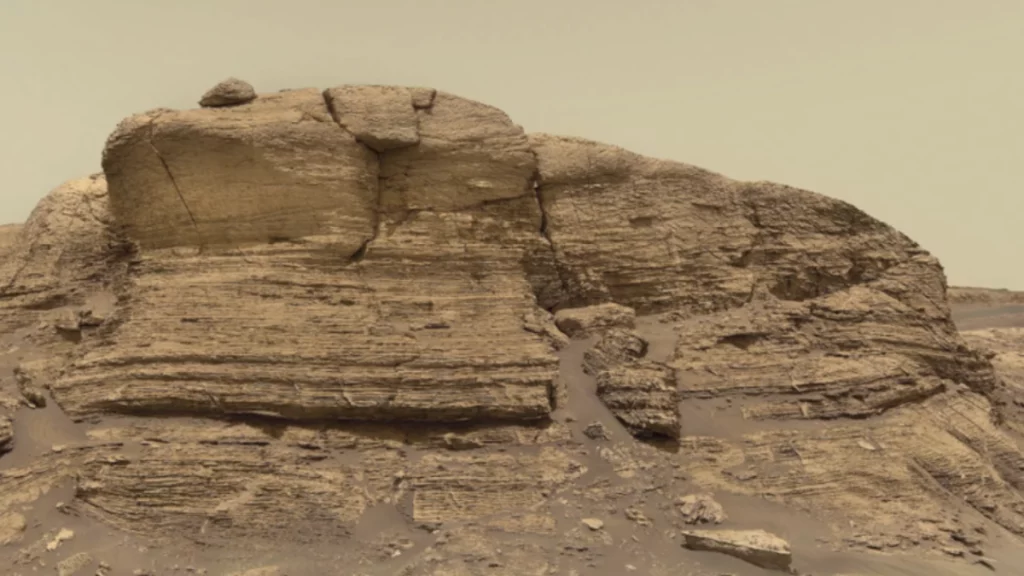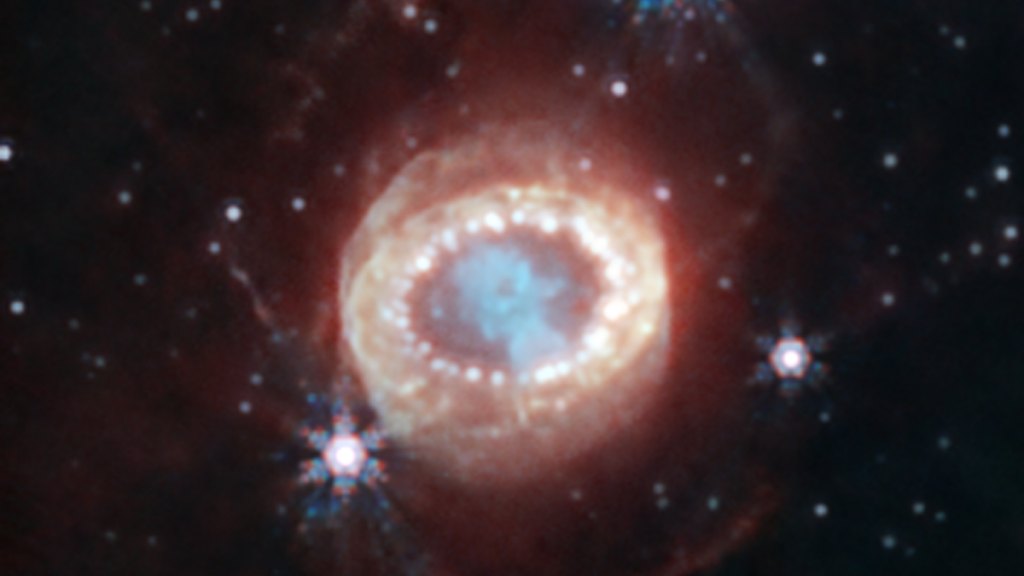NASA’s James Webb Space Telescope has discovered new, never-before-seen details of supernova 1987A located 168,000 light-years from Earth.
NASA’s James Webb Space Telescope has begun studying one of the most famous supernovae, SN 1987A (Supernova 1987A). It is located 168,000 light-years from Earth in the Large Magellanic Cloud. SN 1987A has been the subject of intense observations at wavelengths ranging from gamma rays to radio waves for nearly 40 years since its discovery in February 1987. New observations from the Webb NIRCam (Near Infrared Camera) provide crucial evidence for our understanding of how the supernova evolved over time.
the details
The following image reveals a central keyhole-like structure. This is filled with gas and dust from the stellar explosion. The dust is so dense that even the near-infrared light detected by Webb cannot penetrate through it, forming the dark “hole”. A luminous ring surrounds the central part, forming a band that connects two faded hourglass-shaped outer arms. The equatorial ring, which was formed from material ejected tens of thousands of years before the supernova exploded, contains bright hot spots that appeared when the supernova shock wave struck the ring.
The structures are also taken from other space telescopes
Although these structures have been spotted by space telescopes Hubble and NASA’s Spitzer and Chandra X-ray telescope, James Webb’s unprecedented sensitivity and resolution have revealed a new feature in the supernova remnants: tiny crescent-shaped structures. These crescents are believed to be part of the outer layers of gas produced by the stellar explosion. Our view makes it appear that there is more material in these two crescents than expected.
An unprecedented image of Supernova 1987A
It is also worth noting the high resolution of these images. Prior to James Webb, the Spitzer telescope, now no longer in use, had observed this supernova in the infrared, providing key data on how its emissions evolved over time. However, he has never been able to observe a supernova with such clarity and detail. Despite the decades of study that have passed since the supernova’s initial discovery, many mysteries remain, especially those surrounding the neutron star that was supposed to form after the supernova exploded. Like Spitzer, James Webb will continue to monitor the supernova over time by combining the data collected with Hubble and Chandra data.

“Internet trailblazer. Travelaholic. Passionate social media evangelist. Tv advocate.”







More Stories
Watch real HD video of Mars (we're talking 1.2 billion pixels)
Rising seas: NASA published maps that can be consulted until 2150 (disturbing)
The best match of the season came on Matchday 34: 90 minutes of desire and enthusiasm